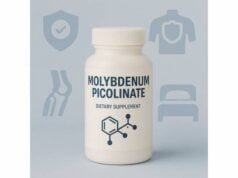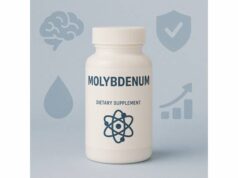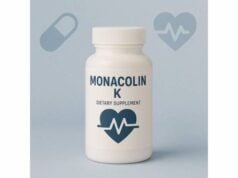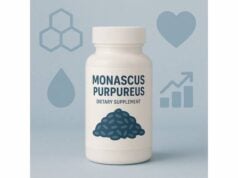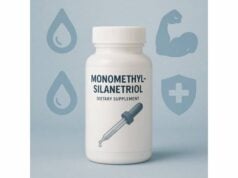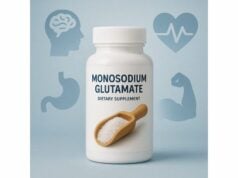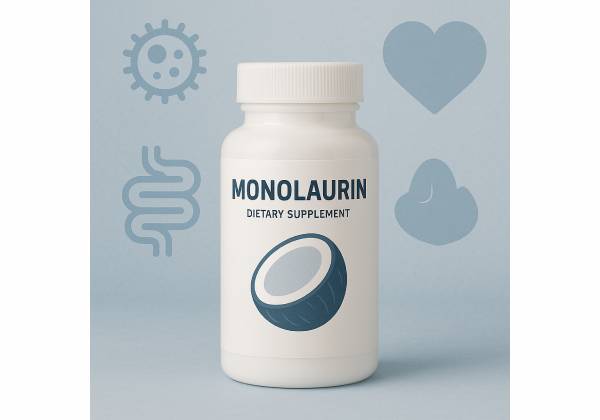
Monolaurin—also called glycerol monolaurate—is a naturally occurring compound formed from lauric acid (a medium-chain fatty acid) and glycerol. It’s found in small amounts in coconut products and mammalian milk, and it’s widely used in foods and personal-care items. Interest in monolaurin as a supplement comes from its broad antimicrobial activity in laboratory settings, its potential to support a healthy balance of microbes, and its ability to modulate immune responses. People take it for seasonal immune support, to help with recurrent disruptions of the skin or gut microbiota, or as part of a general wellness plan.
While its safety record in foods is strong, clinical research in humans remains limited and focused on narrow use cases. That means expectations should be realistic: monolaurin is not an antibiotic or antiviral drug, and effects seen in the lab don’t always translate directly to people. Used thoughtfully—with attention to dose, timing, and safety—monolaurin can be a practical addition to a wellness toolkit for some adults.
Quick Facts
- Supports a balanced microbiota and shows broad antimicrobial actions in lab studies.
- May calm excessive immune signaling and help maintain barrier integrity in the gut and skin.
- Typical supplemental range: 300–1,800 mg per day with food; short-term protocols sometimes use up to 3,000 mg.
- Start low to reduce stomach upset; stop if you develop hives, severe cramps, or persistent nausea.
- Avoid if pregnant or breastfeeding, if you have coconut or palm allergies, or if your clinician advises against lipid-based supplements.
Table of Contents
- What is monolaurin?
- Does monolaurin work? Benefits and mechanisms
- How to use monolaurin step by step
- Dosage: how much and when
- Safety, side effects, and who should avoid
- Evidence snapshot: what studies show today
What is monolaurin?
Monolaurin is a monoacylglycerol—chemically, a single lauric acid molecule attached to glycerol. In nature, it appears in trace amounts in coconut flesh and oil, and in small but biologically relevant amounts within human and other mammalian milks. In manufacturing, monolaurin is produced by combining lauric acid (or lauric-rich oils) with glycerol under controlled conditions. It has been used for decades in foods and personal-care products because it stabilizes emulsions and helps keep certain microbes in check. As part of the broader class of mono- and diglycerides, it’s permitted for use in food in many countries.
What makes monolaurin interesting is its dual character. The “fatty” lauric portion integrates into lipid membranes—such as those that envelope many microbes—while the glycerol end influences fluidity and permeability. In vitro (test-tube) work shows monolaurin can disrupt lipid-coated (enveloped) viruses and many gram-positive bacteria by disturbing their membranes. It can also interfere with microbial signaling (quorum sensing) and biofilm formation, which are tactics microbes use to adhere to surfaces and resist treatment.
Beyond direct antimicrobial effects, monolaurin may modulate immune pathways. Cell and animal studies report reduced activation of certain inflammatory signaling cascades and preservation of barrier proteins in intestinal tissue. This suggests monolaurin’s benefits—if they occur in people—could involve both shaping the microbial community and calming excessive inflammatory responses.
As a supplement, monolaurin is sold as capsules, pellets (often small “beads” of compressed monolaurin), powders, and occasionally as liposomal liquids. Labels commonly highlight “from coconut,” but the final compound is the same regardless of source: glycerol monolaurate.
Key points to keep in mind:
- Monolaurin is not coconut oil. Coconut oil contains multiple fatty acids; only a portion is lauric acid, and only a tiny fraction is pre-formed monolaurin.
- No official daily requirement exists. Monolaurin is not an essential nutrient. Supplement ranges are based on historical use, safety data from foods, and small studies—not on established nutrient needs.
- Quality matters. Because it’s a lipid, monolaurin can oxidize. Reputable brands will control for oxidation and ensure consistent content of active monolaurin rather than related mono- and diglycerides.
In short, monolaurin is a membrane-active, lipid-based compound with promising antimicrobial and immune-modulating properties, widely used in foods and increasingly explored in supplements. Understanding what it can—and cannot—do helps you decide whether it fits your goals.
Does monolaurin work? Benefits and mechanisms
It’s helpful to separate where the evidence is strongest (laboratory and animal models, plus a few focused clinical applications) from what’s plausible but unproven (general immune support in healthy adults).
1) Antimicrobial actions (lab evidence is strong).
Monolaurin destabilizes microbial membranes—especially in enveloped viruses and gram-positive bacteria—and can reduce biofilm formation. In culture, monolaurin has shown activity against Staphylococcus aureus, Streptococcus species, and certain opportunists. For enveloped viruses (those with a lipid shell), monolaurin’s membrane-disrupting effect is a key mechanism; this includes a range of respiratory and mucosal viruses in lab studies. These actions are concentration-dependent: the compound needs to contact the microbe at sufficient levels to be effective in vitro.
2) Microbiome balance and barrier support (animal and cell data).
In rodent models of gut inflammation, monolaurin has been observed to lower pro-inflammatory cytokines and preserve tight-junction proteins (such as occludin and ZO-1) in intestinal tissue. The gut barrier is crucial: when it’s leaky or inflamed, symptoms can escalate. By promoting an environment less favorable to certain pathogens and supporting barrier proteins, monolaurin may contribute to a healthier mucosal surface—at least in animals. Translating dose, formulation, and exposure from animals to humans is not straightforward, so this is an area for cautious optimism rather than firm claims.
3) Immune signaling modulation (preclinical).
Independent of direct antimicrobial effects, monolaurin appears to influence early T-cell signaling and downstream cytokine production in cell systems. The practical meaning for people is not settled, but the pattern lines up with the barrier-protective findings above: less inflammatory “noise,” especially in over-activated states, without suppressing immune defense outright.
4) Focused human applications (modest but promising).
Human studies are limited. One randomized, controlled clinical trial used a topical 5% monolaurin gel for bacterial vaginosis—an application where local antimicrobial and anti-biofilm actions are relevant. Results favored monolaurin over comparator for symptom relief and clinical cure in that setting. That doesn’t mean oral capsules will replicate these outcomes for other conditions, but it demonstrates the compound’s potential when delivered to the right place at an effective concentration.
5) What remains unproven.
Common supplement marketing suggests monolaurin “boosts immunity,” “fights viruses,” or “clears biofilms” systemically. Those are hypotheses. High-quality, controlled trials of oral monolaurin for respiratory infections, skin conditions, or generalized “immune support” are sparse. If you choose to use monolaurin for these goals, treat it as an adjunct to foundational care—sleep, nutrition, stress management, vaccination where appropriate—and not as a stand-alone therapy.
Bottom line: Monolaurin has compelling mechanistic and preclinical support, plus targeted clinical evidence in specific local applications. For broad, systemic benefits in everyday use, the science is still catching up.
How to use monolaurin step by step
Step 1: Choose a reputable form.
Look for products that specify “glycerol monolaurate” or “monolaurin” content (in milligrams per serving). Capsules and bead-like pellets are most common; powders allow flexible dosing but taste waxy. Avoid products that list only “mono- and diglycerides” without quantifying monolaurin.
Step 2: Time it with food.
Because monolaurin is lipid-based, taking it with meals can improve comfort and absorption into mixed micelles during digestion. Many users tolerate it best with breakfast and dinner rather than on an empty stomach.
Step 3: Start low and build.
Begin with 100–300 mg once daily for 2–3 days to gauge tolerance. If comfortable, increase to 300 mg twice daily, then to 600 mg twice daily as desired. Slow titration minimizes transient GI effects like cramping or loose stools.
Step 4: Match the plan to the purpose.
- General wellness / seasonal support: 300–1,200 mg per day, divided with meals.
- Short-term, focused use: up to 1,800–3,000 mg per day in divided doses for a limited period (for adults who tolerate it well).
- Topical applications: only with products designed for that purpose; do not attempt to make your own topical preparations.
Step 5: Combine wisely.
- With other lipids: Pairing with a mixed-meal or a teaspoon of olive oil may improve comfort.
- With probiotics: If supporting gut balance, separate monolaurin and live probiotics by 2–3 hours.
- With medications: Space at least 2 hours from drugs where lipid absorption is critical (e.g., fat-soluble supplements, certain bile-acid–dependent drugs). When in doubt, ask your clinician or pharmacist.
Step 6: Monitor response.
Keep a brief log of dose, timing, and any changes in digestion, skin, or sinus comfort. Look for trends over 2–4 weeks rather than day-to-day fluctuations. If you notice persistent GI upset, headaches, rashes, or new symptoms, reduce the dose or discontinue.
Step 7: Cycle or stay steady.
There’s no consensus on continuous vs. pulsed use. A practical approach is steady daily intake during higher-risk seasons or travel, with periodic breaks (e.g., 5 days on, 2 days off) if you prefer. For targeted goals, limit “intensive” phases to a few weeks unless guided by a clinician.
Step 8: Store it right.
Heat, light, and oxygen degrade lipids. Keep monolaurin in a cool, dry, dark place with the lid tightly closed. Use within the product’s shelf life.
What not to do:
- Don’t substitute coconut oil for monolaurin at equal doses—coconut oil contains relatively little lauric acid and almost no pre-formed monolaurin.
- Don’t exceed label directions without considering your personal risk factors.
- Don’t assume “natural” equals “risk-free.” Monitor how you feel and involve your healthcare team for ongoing concerns.
Dosage: how much and when
Because there’s no official daily requirement, dosage guidance comes from product standards, food-use safety, and early research. The ranges below reflect common practice among clinicians and consumers, with a focus on adult use.
Adult starting range (tolerance-first approach)
- 100–300 mg once daily with a meal for 2–3 days.
- If comfortable, increase to 300 mg twice daily (600 mg/day).
- Many settle between 600 and 1,200 mg/day in divided doses.
Adult typical range (goal-directed approach)
- General wellness / seasonal support: 300–1,200 mg/day (e.g., 300 mg with breakfast and dinner).
- Short-term intensive phase: up to 1,800–3,000 mg/day in 2–3 divided doses for a limited period, then taper to a maintenance level. This higher range should be used thoughtfully and avoided by those with risk factors noted in the safety section.
Timing considerations
- With food is usually more comfortable and may aid uptake into mixed micelles.
- Split dosing smooths exposure and minimizes GI upset.
- Separate from probiotics by a few hours to avoid direct contact in the stomach.
Special populations
- Pregnancy and breastfeeding: Avoid supplemental monolaurin unless your obstetric clinician recommends it for a specific reason. Even though monolaurin occurs naturally in human milk, that does not establish safety of concentrated supplements in these settings.
- Children: Do not use adult products for children without pediatric guidance.
- Liver, pancreas, or gallbladder conditions: Lipid digestion can be altered; consult your clinician first.
- Medication users: If you take drugs that depend on bile acids or fat for absorption, keep at least a two-hour spacing and confirm with a pharmacist.
How to adjust if you feel off
- Mild cramping or loose stools: Reduce to the last comfortable dose; re-attempt increases after 3–5 days.
- Headache or fatigue: Hydrate, ensure meals include protein and complex carbs, and hold dose steady for 3–4 days before changing.
- Rash, hives, wheezing, or severe cramps: Stop immediately and seek medical advice.
Cycling ideas
- Steady low dose: 300–600 mg/day during higher-exposure seasons.
- Pulsed: 5 days on, 2 off; or 2 weeks on, 1 off, based on tolerance and goals.
- Event-based: Begin 3–5 days before travel or anticipated exposure, continue through, then taper.
Remember: Dosage is individualized. Start low, go slow, and aim for the lowest effective routine that meets your goals.
Safety, side effects, and who should avoid
Overall safety profile
Monolaurin has a long history of use in foods as part of mono- and diglyceride emulsifiers, and it’s been studied in topical and oral forms. Most healthy adults tolerate supplemental amounts well when doses are introduced gradually and taken with meals.
Common, usually mild effects
- Digestive: transient cramping, soft stools, or nausea, especially with rapid dose increases or empty-stomach use.
- Headache or fatigue: typically short-lived and dose-related; ensure hydration and adequate calories.
- Skin flushing or warmth: uncommon; usually resolves with dose reduction.
Less common concerns
- Allergic response: rare but possible, particularly if you have known sensitivity to coconut or palm-derived ingredients (frequent industrial sources of lauric acid). Signs include hives, itching, wheezing, or swelling—stop and seek care.
- Lipid-sensitive conditions: individuals with disorders of fat digestion or absorption (e.g., pancreatic insufficiency, certain gallbladder or bile-duct issues) may experience more GI side effects.
Medication and nutrient interactions
- Absorption spacing: Because monolaurin is lipid-based, take it at least 2 hours apart from medications or supplements where fat-phase absorption is critical (certain fat-soluble vitamins, bile acid–dependent drugs).
- Antimicrobials: There’s no established harmful interaction, but avoid assuming synergy. If you’re prescribed antibiotics or antivirals, do not delay or replace them with monolaurin.
- Anticoagulants / antiplatelets: No direct interaction is documented, yet any new supplement warrants communication with your clinician when you use blood-thinners.
Who should avoid or get medical guidance first
- Pregnant or breastfeeding individuals. Safety of supplemental doses hasn’t been established; topical or food exposures are different from high-dose capsules.
- Infants and children unless a pediatric professional recommends and supervises use.
- People with severe or unstable medical conditions (e.g., significant liver, pancreatic, or gastrointestinal disease).
- Anyone with coconut or palm oil allergies.
Responsible use principles
- Use monolaurin as an adjunct, not a replacement, for evidence-based care.
- If you develop fever, chest pain, shortness of breath, severe abdominal pain, persistent vomiting, or signs of anaphylaxis, seek urgent care regardless of supplement use.
- Reassess need periodically. If benefits aren’t clear after 4–8 weeks at a well-tolerated dose, consider discontinuing.
When used thoughtfully, monolaurin is generally well tolerated in adults. A conservative start, careful attention to symptoms, and collaboration with your healthcare team will keep the risk low.
Evidence snapshot: what studies show today
Laboratory (in vitro) evidence
Across multiple studies, monolaurin disrupts lipid membranes of enveloped viruses and gram-positive bacteria, reduces biofilm formation, and interferes with quorum sensing. These effects are concentration-dependent and require direct contact. Lab outcomes are valuable for understanding mechanisms, but the human body is more complex: dilution in tissues, binding to proteins, and metabolism can all change real-world impact.
Animal models
Rodent studies of chemically induced colitis show reduced inflammatory markers and preservation of tight-junction proteins (e.g., occludin, ZO-1) with oral monolaurin, alongside shifts in gut microbiota that favor beneficial genera. These findings support monolaurin’s potential to modulate the mucosal environment—but dose translation to humans is uncertain, and disease models do not fully mirror human conditions.
Human studies
- Topical application for bacterial vaginosis: A randomized controlled trial using 5% monolaurin gel demonstrated meaningful symptom relief and improved clinical outcomes compared with comparator therapy. Topical delivery achieves high local concentrations and bypasses digestive variables—one reason results may not generalize to oral use for unrelated conditions.
- Dietary supplement narrative review: A recent review of human data concluded that monolaurin’s clinical evidence remains limited and context-specific, recommending larger, rigorous trials to clarify oral dosing, pharmacokinetics, and target indications.
What we don’t know yet
- Oral pharmacokinetics in humans at common supplement doses (how much reaches target tissues, and in what form).
- Optimal dose and duration for specific goals like seasonal support, skin balance, or gut comfort.
- Long-term safety at higher supplemental intakes beyond food-use exposures.
Practical takeaways from the evidence
- Monolaurin is mechanistically promising and topically useful in at least one clinical scenario.
- For oral, systemic use, evidence is emerging but inconclusive; a try-and-assess approach under clinician guidance is reasonable for healthy adults who tolerate it.
- Choose realistic goals (supporting balance, comfort, and barrier function) rather than disease treatment claims.
If you decide to use monolaurin, align expectations with the science: it’s a tool with potential benefits, best used thoughtfully and alongside foundational health practices.
References
- The Clinical Use of Monolaurin as a Dietary Supplement 2020 (Narrative Review)
- Five Percent Monolaurin Vaginal Gel for the Treatment of Bacterial Vaginosis: A Randomized Controlled Trial 2020 (RCT)
- Glycerol Monolaurate, an Analogue to a Factor Secreted by Lactobacillus, Is Virucidal against Enveloped Viruses, Including HIV-1 2020 (Mechanistic Study)
- Frontiers | Glycerol monolaurate ameliorates DSS-induced acute colitis by inhibiting infiltration of Th17, neutrophils, macrophages and altering the gut microbiota 2022 (Animal Study)
- eCFR :: 21 CFR Part 184 — Direct Food Substances Affirmed as Generally Recognized as Safe 2025 (Regulatory Reference)
Disclaimer
This content is for educational purposes and is not a substitute for personalized medical advice, diagnosis, or treatment. Supplements can interact with medications and underlying conditions. Always consult a qualified healthcare professional before starting, changing, or stopping any supplement, especially if you are pregnant or breastfeeding, managing a medical condition, or giving products to children.
If you found this helpful, please consider sharing it on Facebook, X (formerly Twitter), or your preferred platform, and follow us for more carefully researched guides. Your support helps us keep creating high-quality, people-first content.

